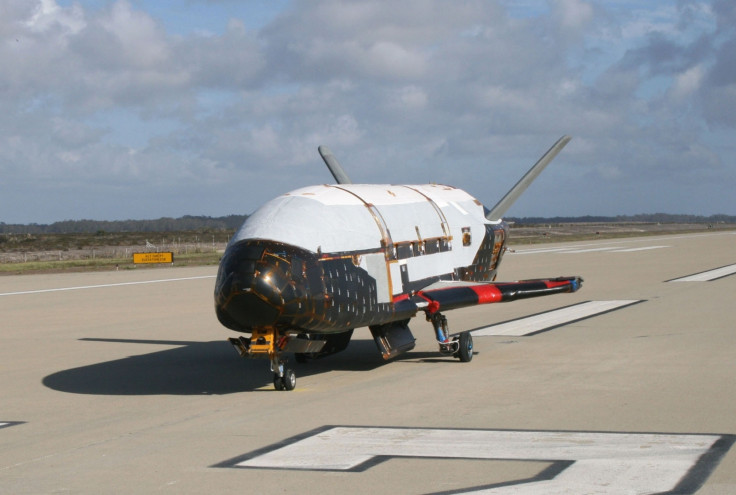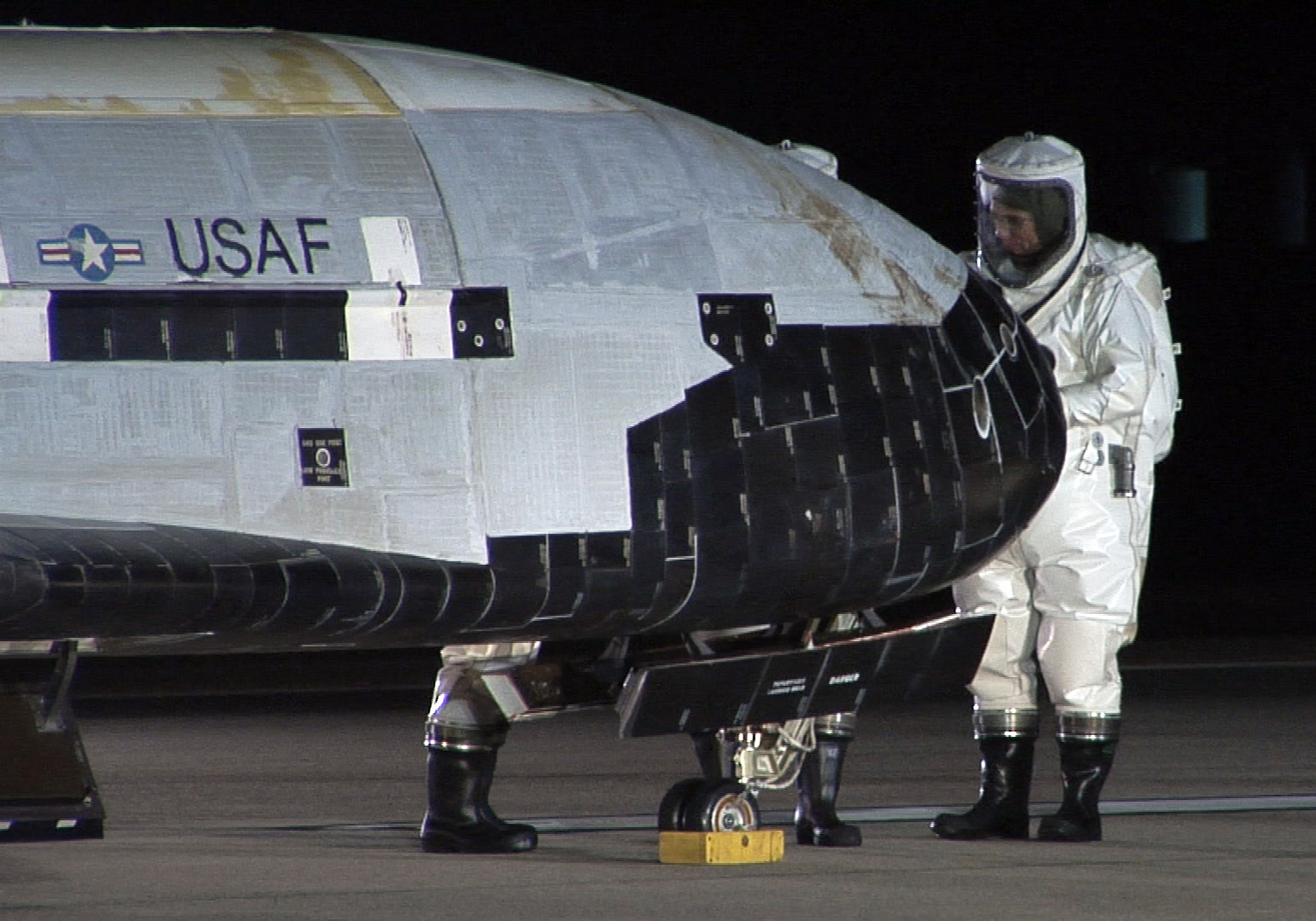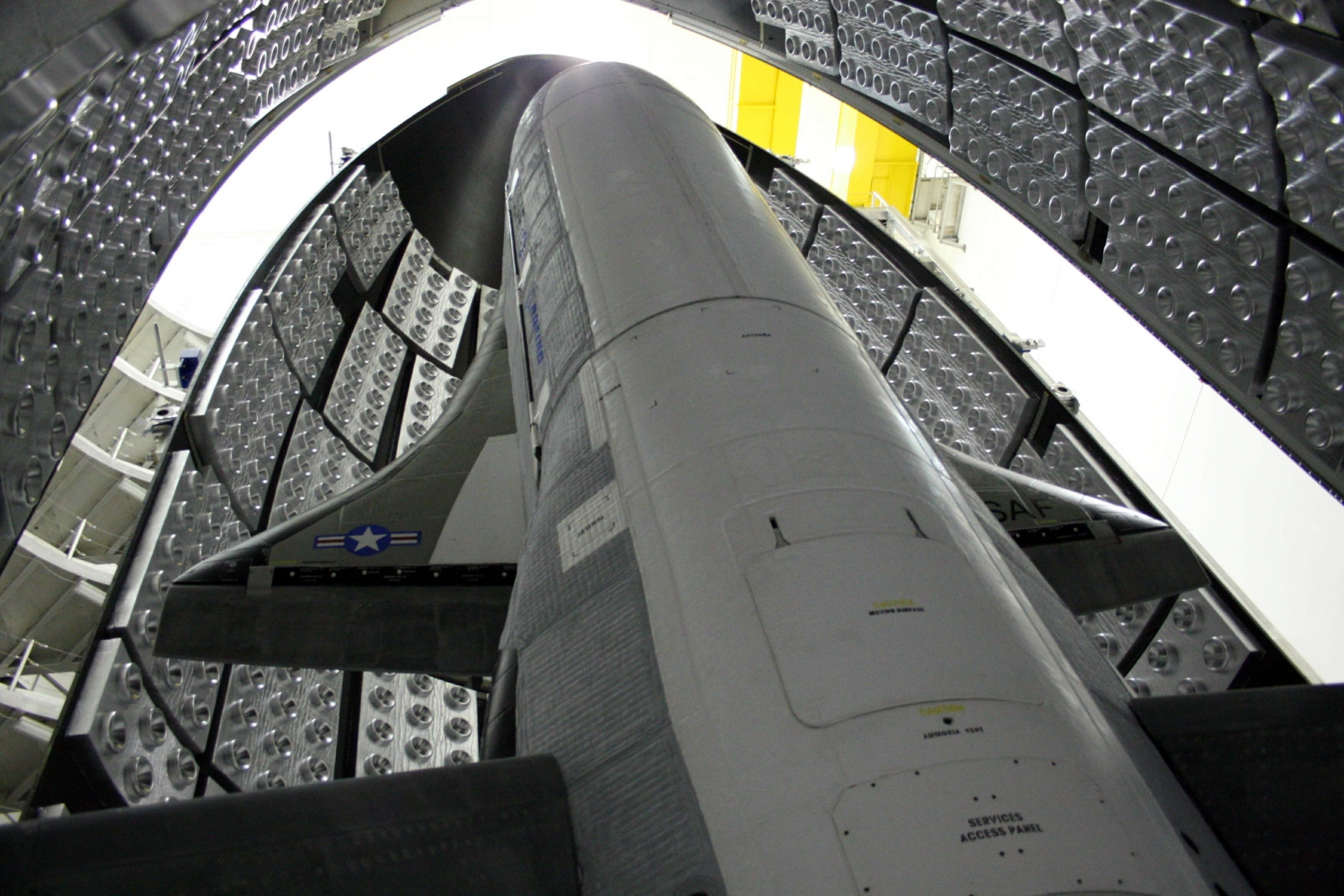What is Boeing X-37B? The secret US Air Force plane that spent over 700 days in space
Why has the X-37B has been in low Earth orbit for so long?

The US Air Force's Boeing X-37B, often dubbed as a mystery space vehicle, returned to Earth on 7 May, after spending 718 days in low Earth orbit. The Air Force took to Twitter to announce the feat.
This was the X-37B programme's fourth successful test, significant as it is the first time the vehicle has both launched and landed at a single home port - the Kennedy Space Center.
The US military maintains that the X-37B was sent to space for tests pertaining to the performance of future space missions. However, speculation has been rife about the secret space plane for years now, with many saying it is a weaponised platform used by the US for various activities such as spying and destroying other satellites.
It is even said to be capable of releasing weapons at targeted areas on Earth.
What is the Boeing X-37B?
Alternatively known as the Orbital Test Vehicle (OTV), the X-37B is a reusable unmanned spacecraft that is launched into space by a carrier rocket. It then re-enters the Earth's atmosphere as a spaceplane.
The X-37 programme was started by Nasa in 1999, which initially planned to construct two space vehicles; an Approach and Landing Test Vehicle (ALTV), and an Orbital Vehicle. In 2004 the project was transferred to the US military, specifically its research wing, Darpa (Defense Advanced Research Projects Agency), famous for running an array of classified projects.
Although Nasa's objective to build an Orbital Vehicle did not materialise, it nevertheless served as the base for what is the X-37B now.



Boeing X-37B technical specifications
- The 4,990kg spaceplane measures 8.92m long, with a wingspan of 4.55m.
- It has a small payload bay of 2.1 x 1.2m, and carries no crew.
- It is powered by gallium arsenide solar cells with lithium-ion batteries.
- It has only one manoeuvring engine that burns hydrazine and nitrogen tetroxide.
Why was the Boeing X-37B sent to space?
After Darpa finished the ALTV part of the programme, the first flight drop test was conducted on 7 April, 2006, at Edwards Air Force Base, California. The actual space orbital was launched four years later on 22 April 2010 using an Atlas V rocket.
When asked about the purpose of the mission, neither Nasa nor the US military have given clear answers, simply repeating the line that it is for future space research.
An X-37B fact sheet provided by the Air Force defines the primary objectives of the X-37B as twofold: reusable spacecraft technologies advancement for America's future in space; and operating experiments which can be returned to and examined on Earth.
The X-37B programme is currently run by the Air Force's Rapid Capabilities Office, and to date two different X-37B vehicles have completed a total of four missions, known as OTV-1, OTV-2, OTV-3 and OTV-4.
Rumours and speculation about the mission's real purpose
The secrecy surrounding the mission resulted in rumour and speculation. Shortly after its maiden orbital launch in 2010, SpaceDaily wrote a lengthy feature suggesting the X-37B could be a "Space Bomber" designed to destroy enemy satellites, or act as a "launch vehicle" that could deliver bombs or missiles to any part of the planet.
Some experts dismissed these possibilities, saying the plane is too small and not manoeuvrable enough for such work.
Other conspiracy theorists claimed that while it may not be able to destroy satellites, it could be deploying its own. Others opined that it is used for spying on countires such as China and North Korea. The latest theories suggest the vessel is testing out an experimental propulsion system.




The #AirForce #X37B #OTV4 has returned from orbit and has landed safely @NASAKennedy. Stay tuned for more info.
— U.S. Air Force (@usairforce) May 7, 2017
© Copyright IBTimes 2025. All rights reserved.





















